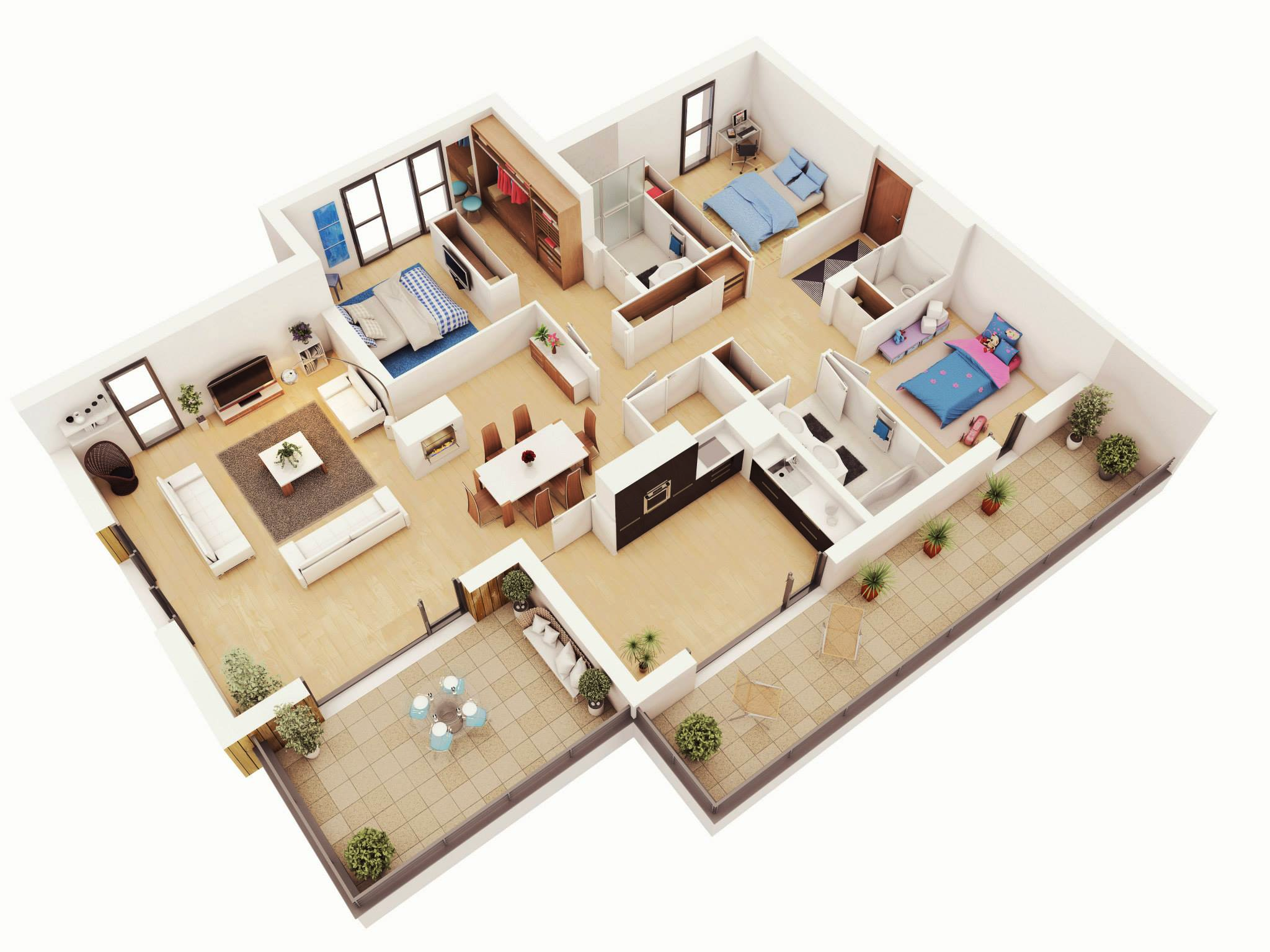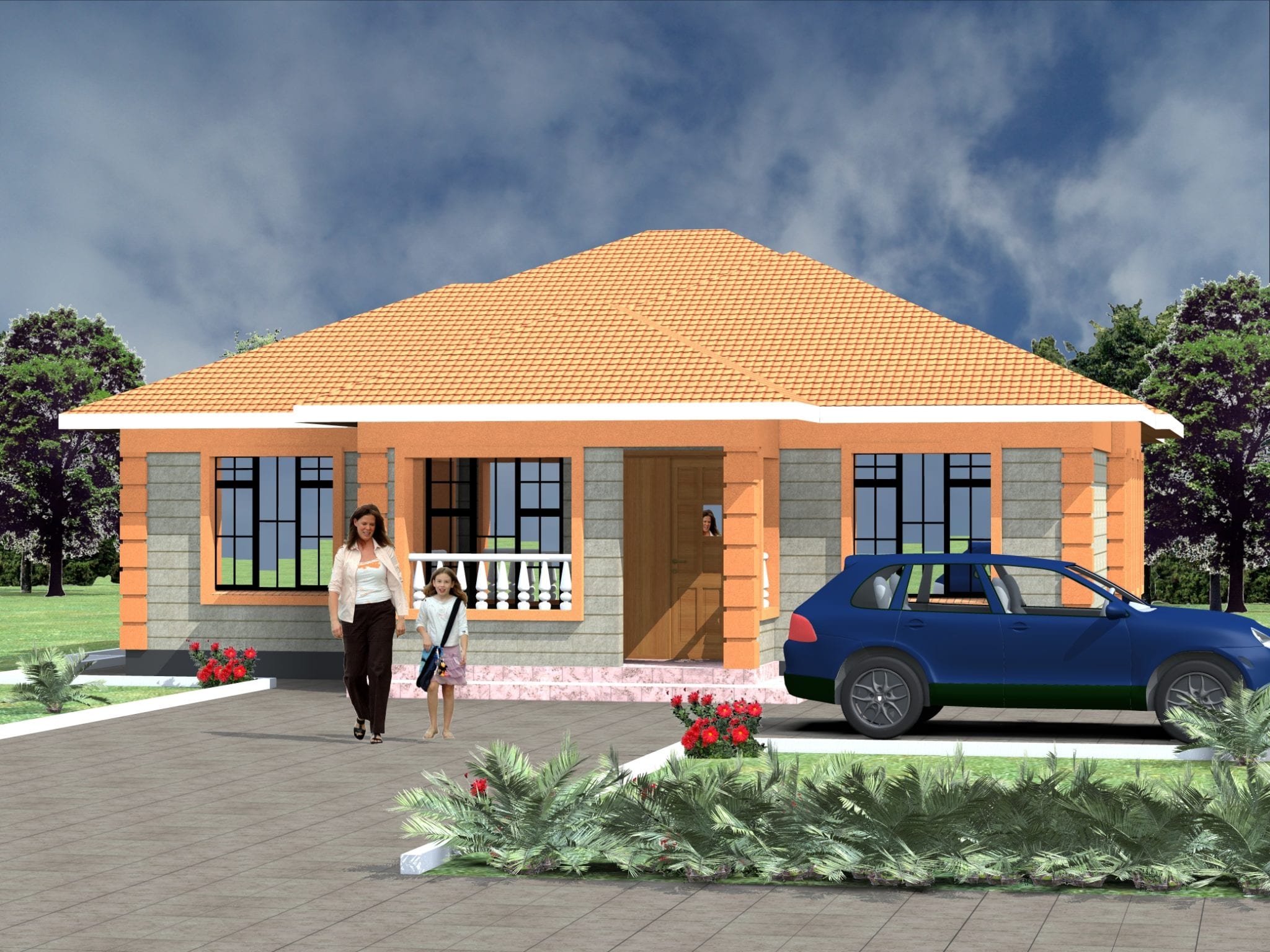Understanding the Appeal of Small Three-Bedroom Homes: Small Three Bedroom House Plans

In the ever-evolving landscape of real estate, the allure of compact living spaces has gained significant momentum. Small three-bedroom homes, often perceived as a practical and efficient choice, have emerged as a compelling alternative to their larger counterparts. This trend can be attributed to a confluence of factors, including changing lifestyles, economic considerations, and a growing awareness of sustainability.
Reasons for the Growing Popularity of Small Three-Bedroom Homes
The increasing popularity of small three-bedroom homes can be attributed to a number of factors, including:
- Affordability: Smaller homes generally require less construction material and land, resulting in lower upfront costs. This makes them an attractive option for first-time homebuyers, families on a budget, or individuals seeking to downsize.
- Lower Maintenance Costs: Smaller homes require less time and effort for upkeep, translating into lower maintenance costs. This is particularly appealing for busy individuals or families who prioritize their time and resources.
- Energy Efficiency: Compact living spaces typically have a smaller footprint, which translates into lower energy consumption for heating, cooling, and lighting. This can lead to significant savings on utility bills and a reduced environmental impact.
- Sustainability: The smaller size of these homes often aligns with the principles of sustainable living, promoting responsible resource consumption and minimizing waste.
- Minimalism: The rise of minimalism as a lifestyle trend has contributed to the appeal of smaller homes. Many individuals find that living with less can be liberating, allowing them to focus on experiences and relationships rather than material possessions.
Benefits of Compact Living
The benefits of compact living extend beyond financial considerations. These homes can offer a unique and fulfilling lifestyle for individuals and families who embrace the principles of minimalism and efficiency.
- Increased Organization: The limited space in a small home encourages a more organized approach to living. This can lead to a sense of order and clarity, fostering a calmer and more focused environment.
- Enhanced Connection: The compact nature of these homes can foster a stronger sense of connection among family members. The proximity to each other can lead to increased interaction and communication, strengthening bonds and creating a more intimate living experience.
- Reduced Clutter: The limited space in a small home often encourages individuals to be more mindful of their belongings, leading to a more streamlined and clutter-free environment. This can create a sense of calm and spaciousness, despite the smaller footprint.
Comparing Small Three-Bedroom Homes to Larger Homes
While small three-bedroom homes offer numerous advantages, it’s important to consider the potential drawbacks and compare them to larger homes:
| Feature | Small Three-Bedroom Homes | Larger Homes |
|---|---|---|
| Space | Limited living space | Ample living space |
| Cost | Lower upfront costs, lower maintenance costs | Higher upfront costs, higher maintenance costs |
| Energy Efficiency | Lower energy consumption | Higher energy consumption |
| Privacy | Less privacy, particularly for larger families | More privacy for individual family members |
| Storage | Limited storage space | Ample storage space |
Real-Life Examples of Small-Space Living
Numerous families and individuals have successfully embraced small-space living, demonstrating that it can be a fulfilling and sustainable lifestyle choice. Here are some real-life examples:
- The Tiny House Movement: The tiny house movement has gained significant traction in recent years, with many individuals choosing to live in homes with a footprint of less than 500 square feet. These homes often feature innovative design solutions to maximize space and functionality.
- Families Living in Small Apartments: Many families around the world live in small apartments, adapting their lifestyles to maximize space and create a comfortable living environment. They often employ creative storage solutions and multi-functional furniture to make the most of their limited space.
Designing and Planning a Small Three-Bedroom House

Designing a small three-bedroom house is a challenging yet rewarding task. You must be creative and strategic to maximise space while ensuring a comfortable and functional living environment. This guide will explore various aspects of designing and planning a small three-bedroom house, including essential considerations, layout options, and innovative space-saving techniques.
Maximising Space
Maximising space in a small three-bedroom house is crucial to create a comfortable and functional living environment. Open floor plans, multi-functional furniture, and built-in storage are essential considerations for achieving this.
- Open Floor Plans: Open floor plans create a sense of spaciousness by eliminating walls and creating a unified flow between different areas. This is particularly effective in smaller homes, as it allows natural light to penetrate deeper into the house and visually expands the space.
- Multi-Functional Furniture: Multi-functional furniture, such as sofa beds, convertible dining tables, and storage ottomans, can significantly save space by serving multiple purposes. This approach allows you to maximise functionality without sacrificing essential amenities.
- Built-in Storage: Built-in storage solutions, such as custom closets, cabinets, and shelves, provide efficient storage without taking up valuable floor space. They can be tailored to the specific needs of each room, maximizing storage capacity and minimizing clutter.
Layout Options, Small three bedroom house plans
Small three-bedroom homes can be designed in various layouts to suit different needs and preferences. The most common layout options include single-story, two-story, and split-level designs.
- Single-Story: Single-story homes are ideal for families with young children or individuals who prefer easy accessibility. They offer a more open and spacious feel, as all living areas are on the same level. However, they may require a larger footprint to accommodate all the desired rooms.
- Two-Story: Two-story homes provide more vertical space, allowing for a smaller footprint while accommodating all necessary rooms. They are often more expensive to build due to the additional construction involved. However, they offer a more traditional and classic aesthetic.
- Split-Level: Split-level homes offer a unique blend of single-story and two-story features. They typically have a main living area on one level, with bedrooms and bathrooms on a lower or higher level. This layout provides a sense of separation between different living areas while minimizing the need for a large footprint.
Space-Saving Design Techniques
Innovative space-saving design techniques can significantly impact the functionality and aesthetics of a small three-bedroom house.
- Vertical Space: Utilizing vertical space is essential for maximizing storage and functionality. This can be achieved by incorporating tall cabinets, shelves, and loft beds.
- Mirrors: Mirrors strategically placed throughout the house can create a sense of depth and spaciousness by reflecting light and visually expanding the space.
- Sliding Doors: Sliding doors, particularly in smaller spaces like closets or bathrooms, can save valuable floor space compared to traditional hinged doors.
- Built-in Seating: Built-in seating, such as window seats or benches, can provide additional seating without taking up valuable floor space.
- Light Colours: Light colours, particularly for walls and ceilings, can make a room feel larger and more airy. This is because light colours reflect more light, creating a sense of openness.
Architectural Elements
Architectural elements can be used to enhance the functionality and aesthetics of a small three-bedroom house.
- Skylights: Skylights can bring in natural light, making a space feel brighter and more spacious. They can also be used to create unique architectural features.
- French Doors: French doors can create a sense of openness and connect indoor and outdoor spaces. They are particularly effective in small homes, as they allow natural light to penetrate deeper into the house.
- Arches: Arches can add visual interest and create a sense of flow between different areas of a home. They can also be used to define specific spaces within an open floor plan.
- Balconies: Balconies can add valuable outdoor space to a small home, providing a place to relax and enjoy the fresh air. They can also be used to create a sense of privacy and seclusion.
Small three bedroom house plans – Small three-bedroom house plans often prioritize functionality over extravagance, but that doesn’t mean sacrificing style. A charming farmhouse bathroom can be achieved even in a compact space, and ideas for farmhouse bathroom can be adapted to suit your needs.
From reclaimed wood accents to vintage fixtures, a farmhouse bathroom can add a touch of rustic charm to your small three-bedroom home.
Small three-bedroom house plans offer a cozy and efficient living space, but it’s important to maximize every inch. One way to create a sense of spaciousness and personality is through unique design choices, especially in the bathroom. Adding a touch of drama and sophistication can be achieved with unique bathroom countertop ideas , like a sleek concrete countertop or a vibrant resin countertop, which can elevate the entire space.
These thoughtful design details, even in a small space, can transform your three-bedroom home into a haven of style and comfort.